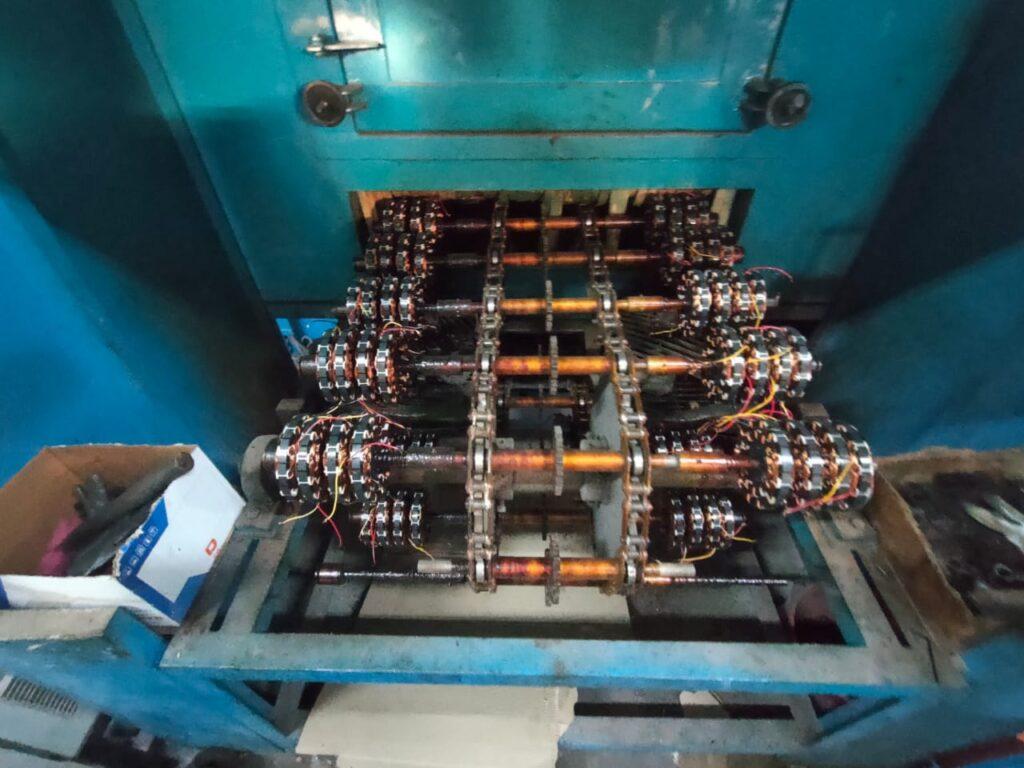The use of a varnish coating machine for motor stators coating is essential in the manufacturing process of electric motors. Varnish coating serves several critical purposes in this context:
- Electrical Insulation: Motor stators consist of windings, which are wires wound around a core. These windings must be electrically insulated from each other and from the stator core to prevent short circuits. Varnish provides an insulating layer that helps maintain the electrical integrity of the motor.
- Protection: Electric motors are often used in harsh environments where they may be exposed to moisture, dust, chemicals, and other contaminants. Varnish coating acts as a protective barrier, shielding the stator windings from these elements, thereby increasing the motor’s durability and longevity.
- Thermal Resistance: Varnish coatings can offer thermal resistance, helping to dissipate heat generated during motor operation. This is especially important in high-performance motors where excessive heat can lead to reduced efficiency and premature failure.
- Improved Performance: Proper varnish coating enhances the overall performance of the motor by reducing the risk of electrical breakdown, improving the insulation properties, and ensuring consistent electrical characteristics.
Here’s how a varnish coating machine is used for motor stators coating:
- Preparation: Before coating, the motor stators are prepared. This typically involves cleaning the stators to remove any contaminants like dirt, oil, or dust. A clean surface is essential for proper varnish adhesion.
- Dipping: The prepared stators are then carefully dipped into a tank or vat containing the varnish. The varnish must thoroughly cover the stator windings and core.
- Dwell Time: The stators are left in the varnish for a specific amount of time to allow the varnish to penetrate and coat the stator components evenly. The dwell time can vary depending on the type of varnish and the desired thickness of the coating.
- Draining: After the dwell time, the stators are lifted out of the varnish tank to allow excess varnish to drain off. This ensures that the coating is uniform and prevents the formation of thick, uneven layers.
- Curing: The varnish-coated stators are subjected to a curing process to solidify the varnish. The curing method can involve air drying, oven baking, or other curing methods suitable for the specific varnish used. This step is crucial for achieving the desired properties of the varnish.
- Quality Inspection: The coated stators undergo a quality inspection to ensure that the varnish coating is free from defects, such as bubbles or unevenness. Any imperfections are addressed before the stators proceed to the next stage of manufacturing.
- Final Assembly: Once the varnish-coated stators pass inspection, they are ready to be assembled into electric motors. The stators’ insulation and protection properties contribute to the motor’s overall reliability and performance.
In summary, the use of a varnish coating machine in the production of motor stators is vital for ensuring the electrical insulation, protection, and performance of electric motors. Properly coated stators are crucial for the reliability and longevity of the motors in various applications.

Comments